Hike date: June 11, 2017
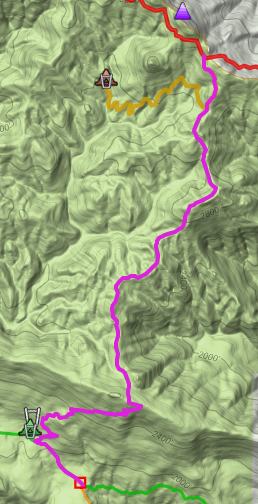
With the current difficulty of getting to sections of Route 1, hiking down from the South Coast Ridge Road, instead of up from Route 1, is an attractive alternative – though the slower speeds along the dirt SCCR can give long driving times. Hearing about recent trailwork on the southern end of Three Peaks Trail, Maria Ferdin and I went out to hike it in the opposite direction, from north to south.
[Note: the trail’s official name is “Dutra Trail” – but that name has sometimes been applied to other trails running through Dutra Flat, so I am using its local unambiguous name “Three Peaks Trail”]
Today the South Coast Ridge Road in good shape, with evidence of recent grading and (with care) could have been done by a high-clearance 2WD vehicle. So our speeds were higher than usual, but it still took us 90 minutes to drive the 23 miles down to Three Peaks Trail. At times, especially in winter and when wet, the road can be much rougher and difficult, with 4WD required.
Three Peaks Bushwhack: a fire observation tower once stood atop the highest of the Three Peaks – its site can be reached via the now overgrown access road, but only foundation stones remain.

From the Three Peaks Trail access gate along SCRR, a dirt road leads 0.3 miles to a right-angle bend, where it leaves the ridge to reach Three Peaks Campground. As a side trip, we checked out that camp – it’s a nice spot with a picnic table, a stream with dunking pool, and options of either shaded or sunny camping.
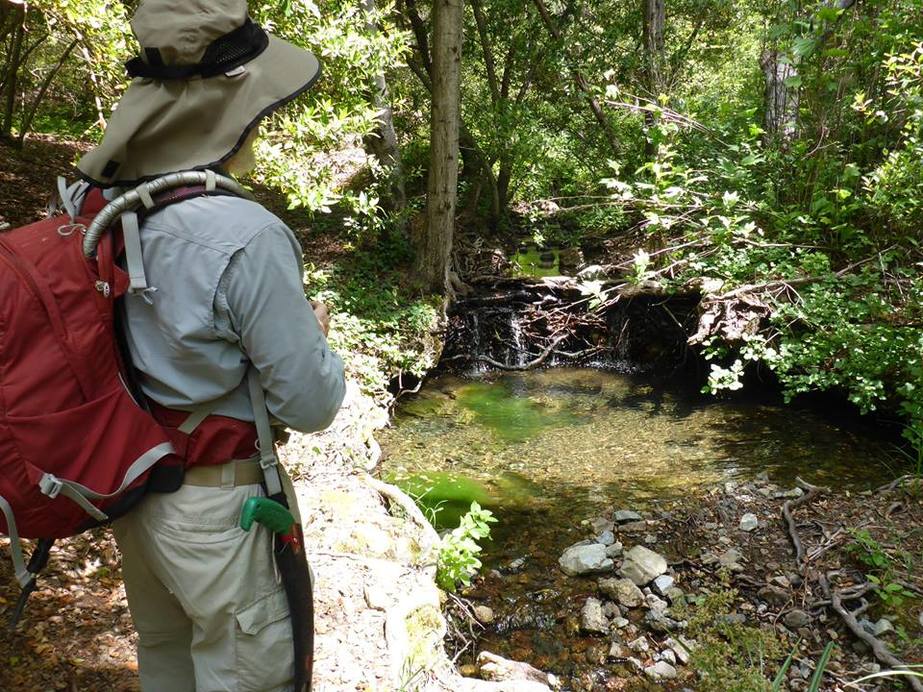
But our goal was Dutra Camp via the Three Peaks Trail. Leaving the road at the bend, where an orange flag marks the trail continuing along the ridgeline, we entered the brush. Here the trail follows an overgrown firebreak and further on we could see patches of bare ground. Lacking any recent trailwork, this section now alternates between relatively open patches and brushy sections where the exact route is unclear (though since it follows the ridgeline, getting lost is not a problem). We cleared some of the more obstructive brush with a saw and loppers and put up flags to help mark the route.
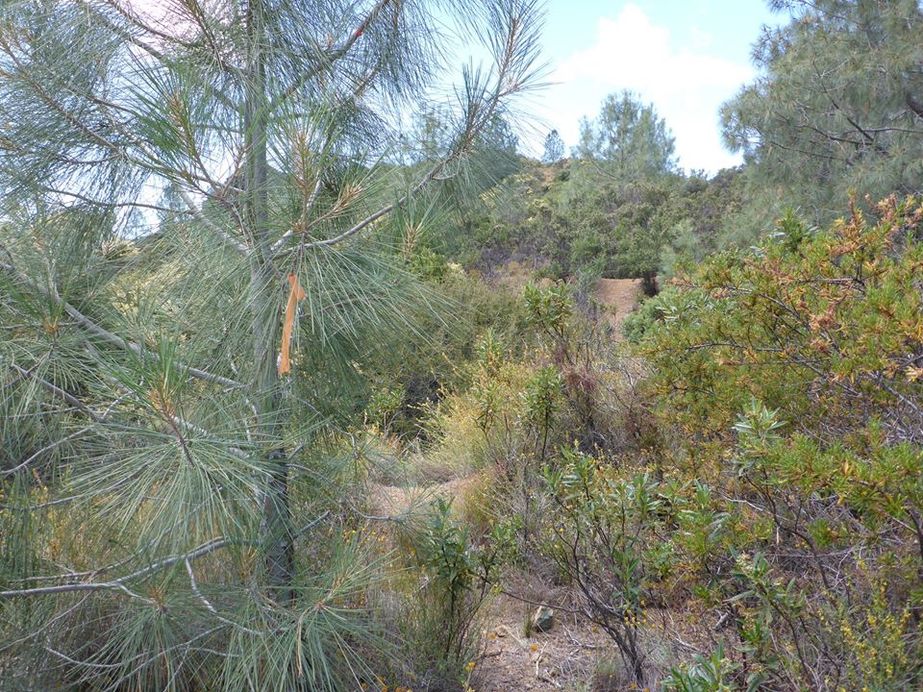
The most difficult part was descending a some steep slopes covered with scree, where my feet wanted to slide out from underneath – I was glad I’d brought along a pole. On older quadrangle maps the marked trail avoids the highest knob, so perhaps the trail once avoided those slopes and hikers now simply following the firebreak instead.
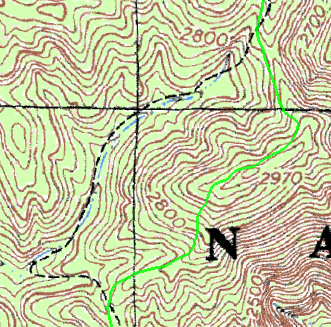
Unfortunately we found many large bushes of chaparral pea along the northern end. Ugh. I hate that plant – it’s more difficult to push through than ceanothus or coyotebush since its thorny nature pricks beneath ones shirt and pants. It’s bad enough for hikers, but as a trailworker I still remember the pain of trying to reach inside to cut its central core. It was blooming and pretty – but I found its beauty hard to appreciate. Thankfully the bushes still had spaces between them and were not as stiff and thorny as when drier.
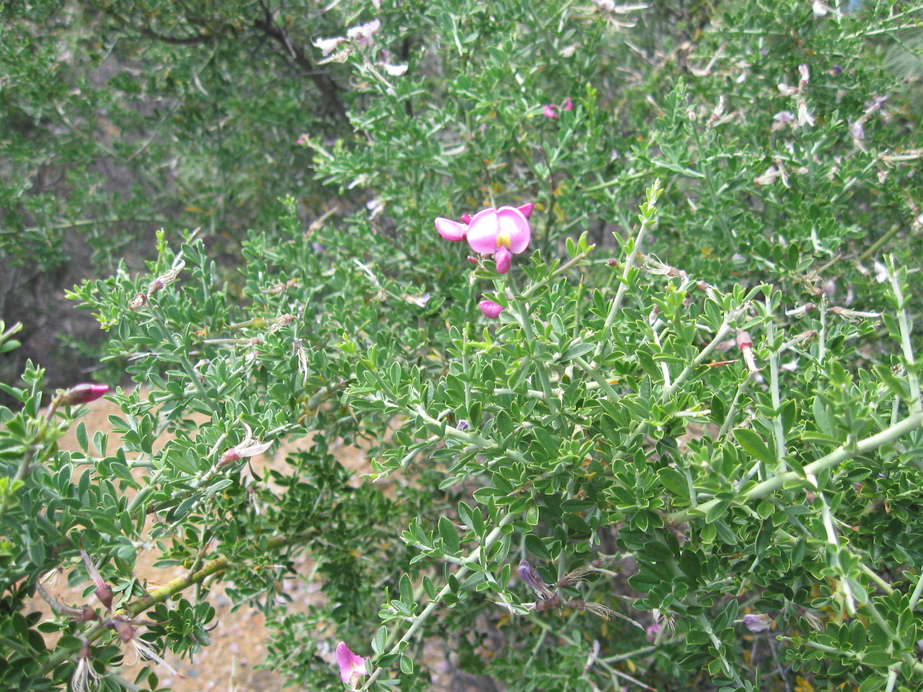
The hike was very pleasant, up and down along the undulating ridge. All directions had views – Three Peaks along the skyline above us, steep ravines to either side, pine trees along the ridge ahead. After 1.7 miles we found the first cut of the recent trailwork, just before ascending the final ridge, where the grasslands of Dutra Flat opened out before us, and then an easy downhill over newly manicured trail for the next 1.1 mile to reach Dutra Camp.
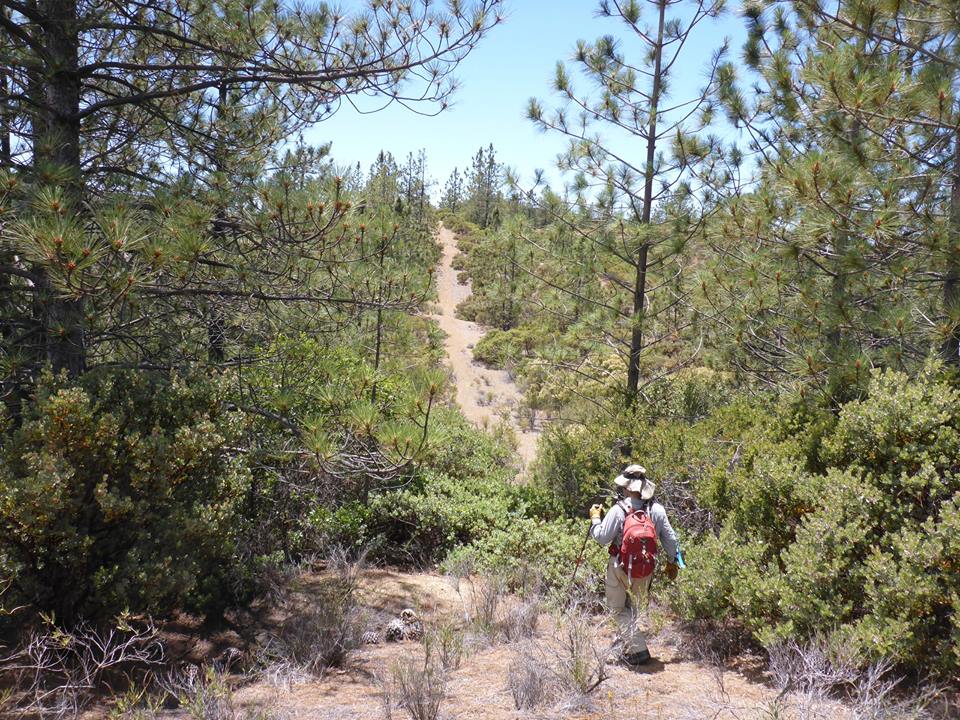
Thankfully cattle have not yet been here this year, so the grassland is untrammeled. The camp itself is fenced to keep out cattle and beneath some incongruous cypress trees, planted back in the Dutra homestead days.
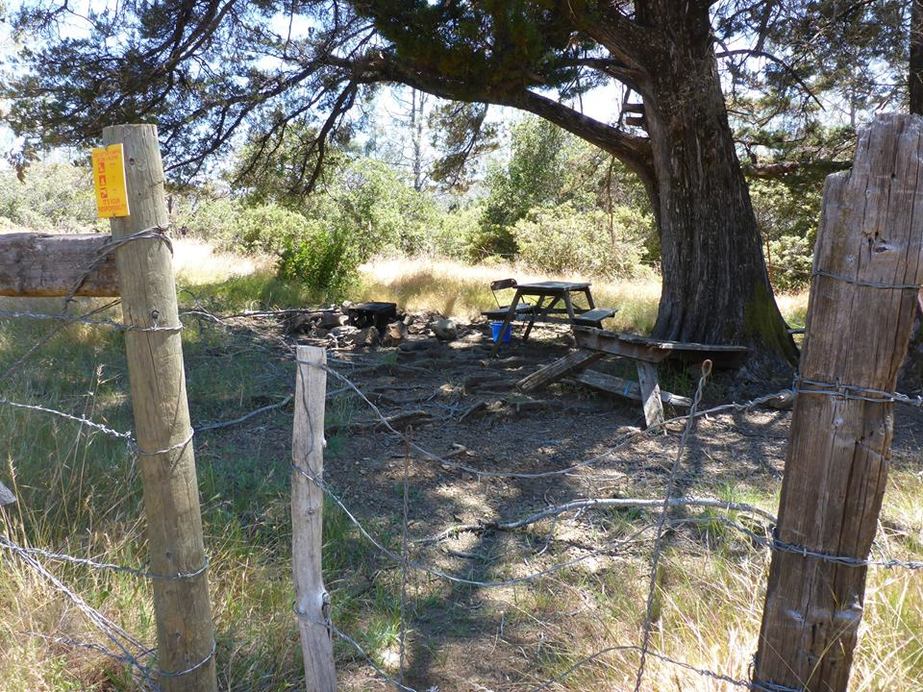
We also investigated the original Dutra homestead site, 0.3 miles SE of the camp along the Spruce Creek (aka Carpoforo) Trail. The original homestead (1888) was near the remaining cypress tree – the site has been cleared, but a pear and peach tree remain and still produce some stunted fruit. Over the years they’ve become large and oddly shaped – I’m told they are a wonderful sight in spring when blossoming.
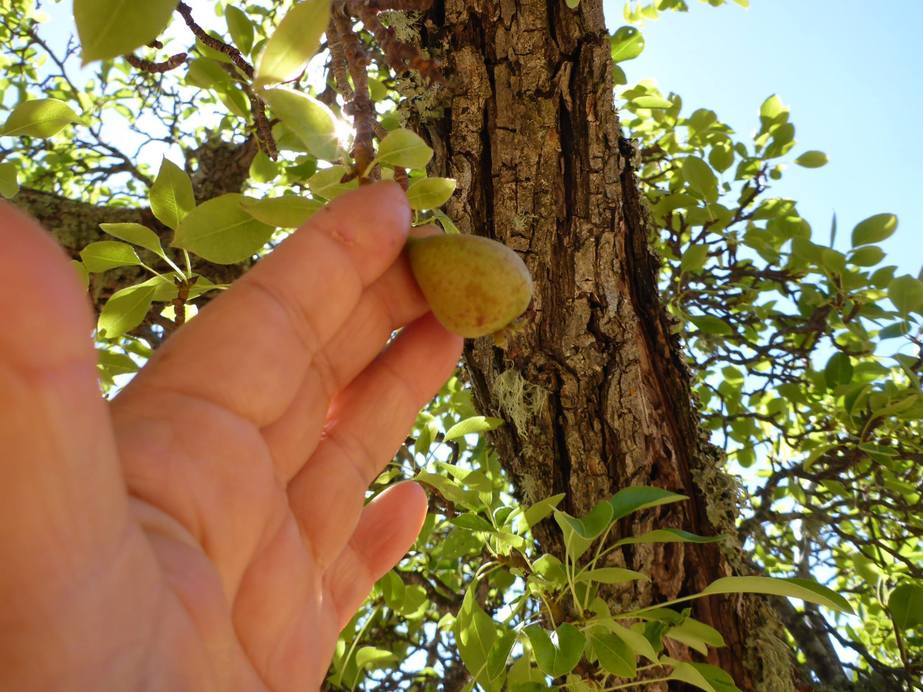
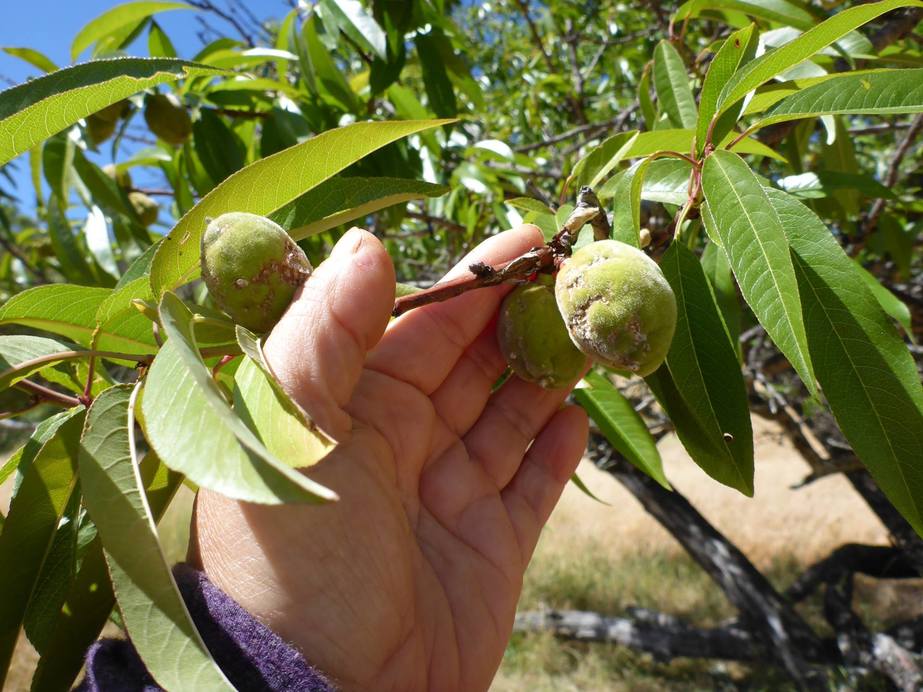

Heading back to our car, we did some additional sawing and lopping and flagging so the trail is now easily followed – though a bit brushy, its not a bushwhack. Overall, highly recommended for those who enjoy ridgeline hikes.
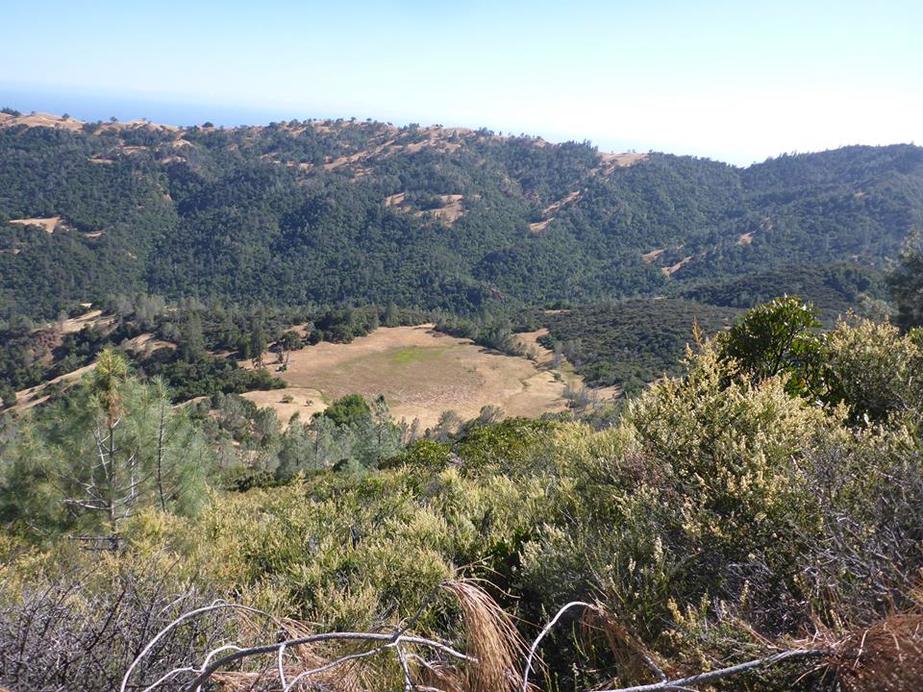
Our thanks to those who earlier worked on the trail, and to Steve Cypher their leader. Hopefully the northern end will also receive some TLC (and those nasty chaparral pea bushes removed).
Jack, this is wonderful! Hope to read more about your adventures.
You won’t have to read about them if you are on them ! It was nice to have an “expedition photographer” along. 🙂
I last hiked this trail June 17. I thought the recent cutting & flagging were done by mountain bikers since there were fresh tracks. I hope to do more trail work out there before long. Thanks for the shout out!